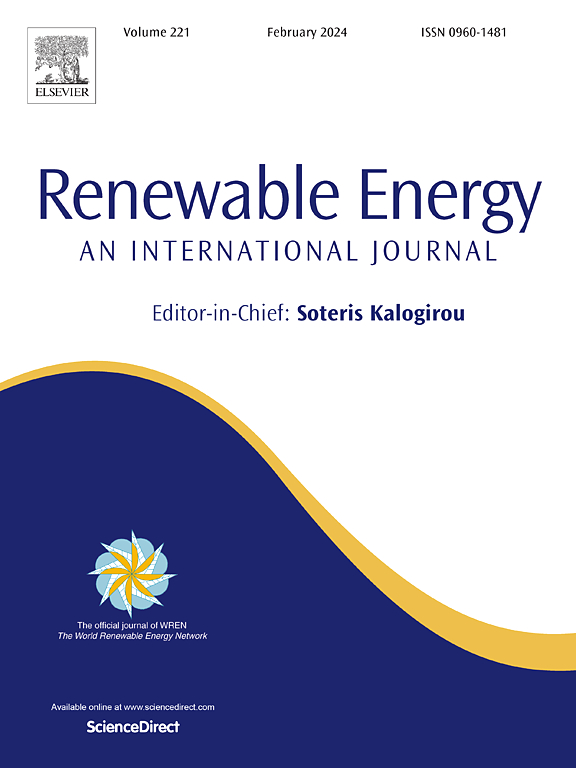Investigation of the transient characteristics of the Francis turbine during runaway process
IF 9
1区 工程技术
Q1 ENERGY & FUELS
引用次数: 0
Abstract
Transient hydraulic phenomena, including flow separation, vortex structure and high amplitude pressure fluctuation, occur in the turbine during runaway process, significantly affecting the safe and stable operation. To clarify the unsteady flow characteristics in the runaway process, this paper focus on a low head model Francis turbine, examining the transient flow dynamics from rated speed to runaway speed. Numerical simulations show good agreement with experimental test results for the runaway speed and discharge. Results identify that two typical cavitation vortex structures within the runner: A cloud cavitation vortex near the hub on the pressure side and a columnar cavitation vortex on the suction side. Further analysis reveals that the pressure fluctuation induced by the former are low-frequency (0.08fn and harmonics), whereas those induced by the latter are high-frequency (1.16fn and harmonics). Entropy production analysis in homogeneous flow indicates that energy dissipation mainly occurs in the runner and draft tube during the runaway process. Turbulent entropy production within the turbine comprises a significant portion of the total entropy production. Additionally, areas around the recirculation zone exhibit considerable high entropy production, indicating that the energy of the fluid is dissipated by cavitation vortex structures generated in these areas. Additionally, the analysis indicates that the entropy production rate correlates with vapor generation, underscoring the cavitation vortex as the primary cause of energy dissipation. This investigation can provide valuable insights into the energy dissipation mechanisms during the runaway process.
研究混流式水轮机在失控过程中的瞬态特性
水轮机在失控过程中会出现瞬态水力现象,包括水流分离、涡流结构和高振幅压力波动,严重影响水轮机的安全稳定运行。为阐明失控过程中的非稳态流动特性,本文以低水头混流式水轮机为研究对象,探讨了从额定转速到失控转速的瞬态流动动力学特性。数值模拟结果表明,失控转速和排量与实验测试结果十分吻合。结果发现转轮内有两种典型的气蚀涡结构:压力侧靠近轮毂的云状空化漩涡和吸入侧的柱状空化漩涡。进一步分析发现,前者引起的压力波动是低频的(0.08fn 和谐波),而后者引起的压力波动是高频的(1.16fn 和谐波)。均质流中的熵产生分析表明,在失控过程中,能量耗散主要发生在流道和引流管中。涡轮机内的湍流熵产生占总熵产生的很大一部分。此外,再循环区周围的区域显示出相当高的熵产生量,这表明流体的能量是由这些区域产生的空化涡流结构耗散的。此外,分析表明,熵产生率与蒸汽产生率相关,突出了空化漩涡是能量耗散的主要原因。这项研究可以为了解失控过程中的能量耗散机制提供有价值的见解。
本文章由计算机程序翻译,如有差异,请以英文原文为准。
求助全文
约1分钟内获得全文
求助全文
来源期刊

Renewable Energy
工程技术-能源与燃料
CiteScore
18.40
自引率
9.20%
发文量
1955
审稿时长
6.6 months
期刊介绍:
Renewable Energy journal is dedicated to advancing knowledge and disseminating insights on various topics and technologies within renewable energy systems and components. Our mission is to support researchers, engineers, economists, manufacturers, NGOs, associations, and societies in staying updated on new developments in their respective fields and applying alternative energy solutions to current practices.
As an international, multidisciplinary journal in renewable energy engineering and research, we strive to be a premier peer-reviewed platform and a trusted source of original research and reviews in the field of renewable energy. Join us in our endeavor to drive innovation and progress in sustainable energy solutions.
 求助内容:
求助内容: 应助结果提醒方式:
应助结果提醒方式:


